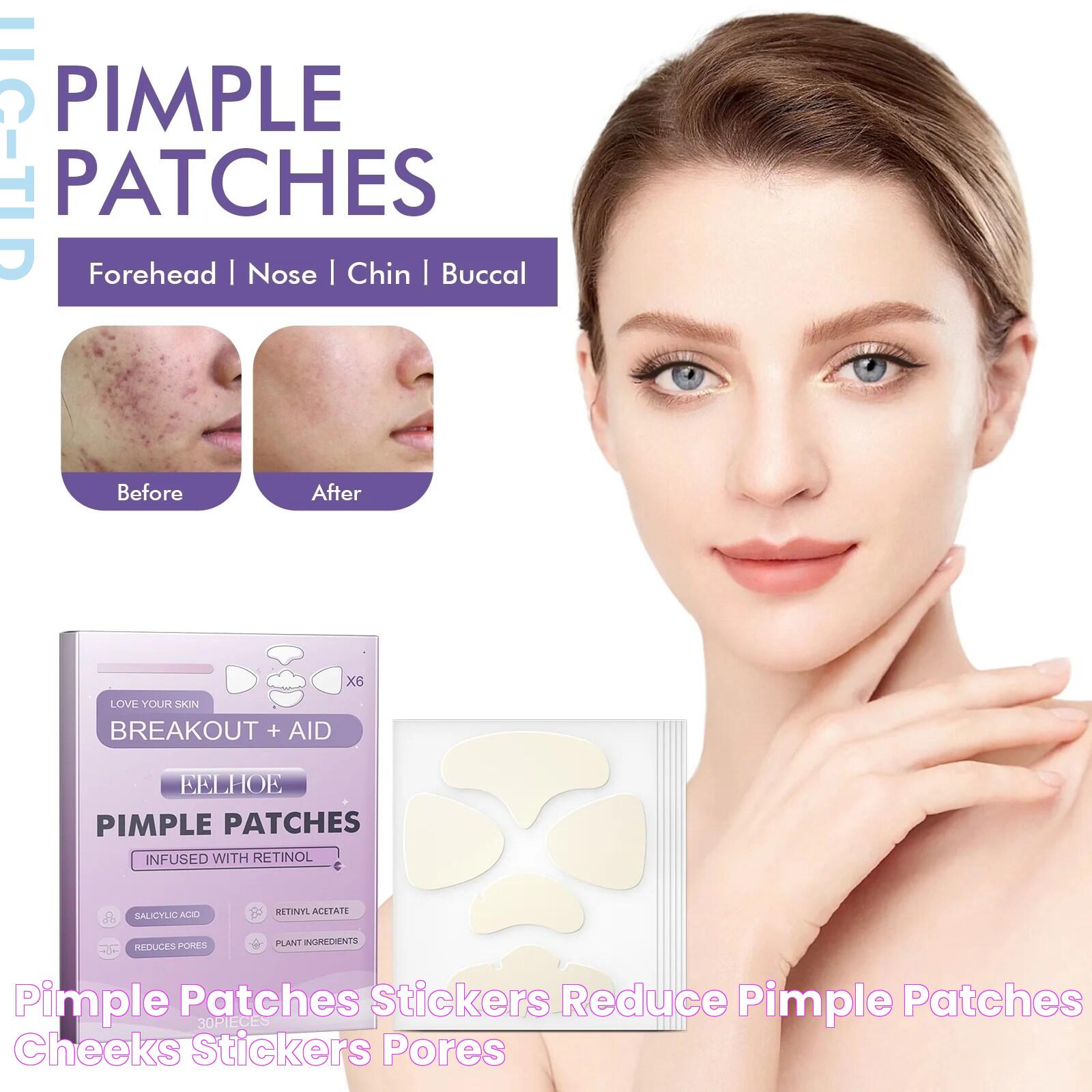Causes And Solutions For Red Patches On Cheeks: A Comprehensive Guide

Have you ever looked in the mirror and noticed red patches on your cheeks? You’re not alone! Many people experience this common skin issue, which can be both a cosmetic concern and a sign of something more serious. Understanding the causes and solutions for these red patches is crucial for maintaining healthy, glowing skin.
Red patches on cheeks can be caused by a variety of factors, ranging from environmental influences to underlying health conditions. It’s important to identify the root cause of the redness in order to address it effectively. Fortunately, there are several strategies to manage these patches, including lifestyle changes, topical treatments, and professional medical advice.
In this article, we’ll explore the different causes of red patches on cheeks and provide practical solutions to help you achieve clear and radiant skin. We’ll also discuss when it might be time to seek professional help, ensuring you have all the information you need to tackle this issue confidently.
Read also:Winning Strategies And Tips For The Florida Lotto
Table of Contents
- What Causes Red Patches on Cheeks?
- Are Red Patches on Cheeks Related to Allergies?
- How Does Weather Affect Red Patches on Cheeks?
- Can Stress Cause Red Patches on Cheeks?
- What Skin Conditions Cause Red Patches on Cheeks?
- Are Red Patches on Cheeks Genetic?
- Diet and Red Patches on Cheeks
- Effective Home Remedies for Red Patches on Cheeks
- When to See a Doctor for Red Patches on Cheeks?
- Medical Treatments for Red Patches on Cheeks
- How to Prevent Red Patches on Cheeks?
- Are Red Patches on Cheeks a Sign of Rosacea?
- Impact of Skincare Products on Red Patches
- Lifestyle Changes to Reduce Red Patches on Cheeks
- FAQs
- Conclusion
What Causes Red Patches on Cheeks?
Red patches on cheeks can arise from numerous factors. These can be broadly categorized into environmental influences, lifestyle choices, and health conditions. Understanding the cause is essential for proper treatment.
Environmental factors include exposure to harsh weather conditions, such as extreme cold or heat, which can irritate the skin and lead to redness. Additionally, pollution and UV radiation can contribute to skin damage and redness.
Lifestyle choices, such as diet and stress levels, have a significant impact on skin health. Consuming spicy foods, caffeine, or alcohol can lead to flushing and redness. Stress can also exacerbate skin conditions, leading to red patches.
Underlying health conditions, such as eczema, rosacea, and seborrheic dermatitis, are common culprits of red patches on cheeks. These conditions often require medical intervention for proper management.
Are Red Patches on Cheeks Related to Allergies?
Yes, allergies can cause red patches on the cheeks. Allergic reactions to certain foods, skincare products, or environmental factors can manifest as skin redness. Identifying and avoiding allergens are crucial steps in managing redness caused by allergies.
Common allergens include pollen, pet dander, and certain ingredients in skincare products. Conducting an allergy test with a healthcare professional can help pinpoint specific triggers.
Read also:Top Tips And Insights About Best Buy Customer Service
How Does Weather Affect Red Patches on Cheeks?
Weather plays a significant role in the condition of our skin. Extreme temperatures, humidity levels, and wind can all contribute to red patches on cheeks. Cold weather can strip the skin of moisture, leading to dryness and redness. In contrast, hot and humid conditions can increase sweat and oil production, clogging pores and causing irritation.
Protecting your skin from harsh weather by using moisturizers and sunscreens is essential in preventing weather-induced redness.
Can Stress Cause Red Patches on Cheeks?
Stress is a major factor that can contribute to red patches on cheeks. Stress triggers the release of cortisol, a hormone that can increase oil production and lead to inflammation. This can exacerbate existing skin conditions and result in redness.
Managing stress through relaxation techniques, regular exercise, and adequate sleep can help reduce the appearance of red patches on the cheeks.
What Skin Conditions Cause Red Patches on Cheeks?
Several skin conditions can cause red patches on cheeks. These include:
- Rosacea: A chronic skin condition characterized by redness, visible blood vessels, and sometimes pimples.
- Eczema: Also known as atopic dermatitis, this condition involves red, itchy, and inflamed skin.
- Seborrheic Dermatitis: A condition that causes red, scaly patches, often accompanied by dandruff.
Each of these conditions requires specific treatment approaches, often involving topical medications and lifestyle modifications.
Are Red Patches on Cheeks Genetic?
Genetics can play a role in the development of red patches on cheeks. If you have a family history of skin conditions like rosacea or eczema, you may be more prone to experiencing similar issues. Understanding your genetic predisposition can help in managing and preventing red patches effectively.
Diet and Red Patches on Cheeks
Diet has a profound impact on skin health. Certain foods and beverages can trigger or worsen red patches on cheeks. Spicy foods, alcohol, and caffeine are known to cause flushing and redness. Incorporating a balanced diet rich in fruits, vegetables, and hydration can improve skin health and reduce redness.
Consider avoiding known triggers and consulting with a nutritionist for personalized dietary recommendations.
Effective Home Remedies for Red Patches on Cheeks
There are several home remedies that can help reduce red patches on cheeks:
- Aloe Vera: Its soothing properties can reduce inflammation and redness.
- Green Tea Extract: Known for its anti-inflammatory properties, it can help calm irritated skin.
- Cucumber Slices: Placing cool cucumber slices on the cheeks can soothe and reduce redness.
It's important to perform a patch test before trying any new remedy to ensure it doesn't cause an allergic reaction.
When to See a Doctor for Red Patches on Cheeks?
If red patches on cheeks persist despite home remedies and lifestyle changes, it may be time to consult a dermatologist. Persistent redness, accompanied by pain, itching, or swelling, could indicate an underlying skin condition that requires professional treatment.
Early diagnosis and treatment can prevent the condition from worsening and improve skin health.
Medical Treatments for Red Patches on Cheeks
Medical treatments for red patches on cheeks vary depending on the underlying cause. Common treatments include:
- Topical Creams: Prescription creams containing steroids or antibiotics can reduce inflammation and treat infections.
- Oral Medications: For chronic conditions like rosacea, oral antibiotics or isotretinoin may be prescribed.
- Laser Therapy: This can be effective in reducing redness caused by visible blood vessels.
A dermatologist can recommend the best treatment plan based on individual needs.
How to Prevent Red Patches on Cheeks?
Preventing red patches on cheeks involves adopting a proactive skincare routine and lifestyle changes. Here are some tips:
- Use Gentle Skincare Products: Opt for products free from harsh chemicals and fragrances.
- Stay Hydrated: Drinking plenty of water keeps the skin hydrated and healthy.
- Wear Sunscreen: Protect your skin from UV damage by using a broad-spectrum sunscreen daily.
Regular skin check-ups with a dermatologist can also help in early detection and prevention of skin issues.
Are Red Patches on Cheeks a Sign of Rosacea?
Red patches on cheeks can indeed be a sign of rosacea. This chronic skin condition is characterized by facial redness, visible blood vessels, and sometimes pimples. Rosacea is more common in fair-skinned individuals and tends to occur in families.
If you suspect rosacea, consulting a dermatologist for diagnosis and treatment is recommended.
Impact of Skincare Products on Red Patches
Skincare products can significantly impact the condition of your skin. Using products with harsh ingredients, such as alcohol or synthetic fragrances, can irritate the skin and exacerbate red patches on cheeks. Opting for hypoallergenic and fragrance-free products can help reduce irritation and maintain healthy skin.
It's advisable to conduct patch tests when trying new skincare products to ensure they do not trigger allergic reactions or worsen redness.
Lifestyle Changes to Reduce Red Patches on Cheeks
Integrating certain lifestyle changes can effectively reduce red patches on cheeks. These include:
- Regular Exercise: Promotes circulation and reduces stress, contributing to healthier skin.
- Balanced Diet: Consuming a diet rich in antioxidants and essential nutrients supports skin health.
- Adequate Sleep: Ensures the skin has time to heal and regenerate.
Consistency in these lifestyle changes can lead to lasting improvements in skin appearance and health.
FAQs
1. Can dehydration cause red patches on cheeks?
Yes, dehydration can lead to dry and irritated skin, resulting in red patches on the cheeks. Staying hydrated is crucial for maintaining healthy skin.
2. Are red patches on cheeks contagious?
No, red patches on cheeks are not contagious. However, they may indicate a skin condition that requires medical attention.
3. Do hormonal changes affect red patches on cheeks?
Yes, hormonal changes, such as those occurring during puberty, pregnancy, or menopause, can affect skin condition and contribute to red patches on cheeks.
4. Can makeup worsen red patches on cheeks?
Using heavy or irritating makeup can worsen red patches. Opting for non-comedogenic and fragrance-free makeup products can help minimize irritation.
5. Is it possible to permanently remove red patches on cheeks?
While some treatments can significantly reduce red patches, maintaining a consistent skincare routine and lifestyle changes are vital for long-term management.
6. Can smoking cause red patches on cheeks?
Yes, smoking can negatively impact skin health and contribute to red patches due to its effects on circulation and collagen production.
Conclusion
Red patches on cheeks can be a source of concern for many, but understanding the causes and implementing the right solutions can lead to healthier skin. Whether the result of environmental factors, lifestyle choices, or underlying health conditions, addressing the root cause is key to effective management. By adopting a comprehensive skincare routine, making necessary lifestyle changes, and seeking professional help when needed, you can reduce the appearance of red patches and enjoy a clearer complexion.
Article Recommendations

